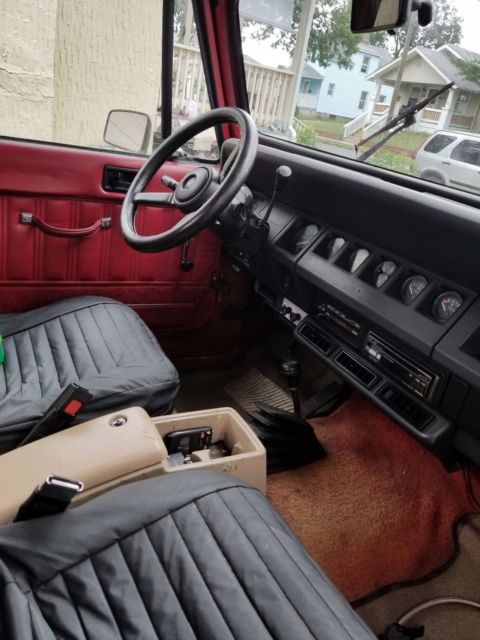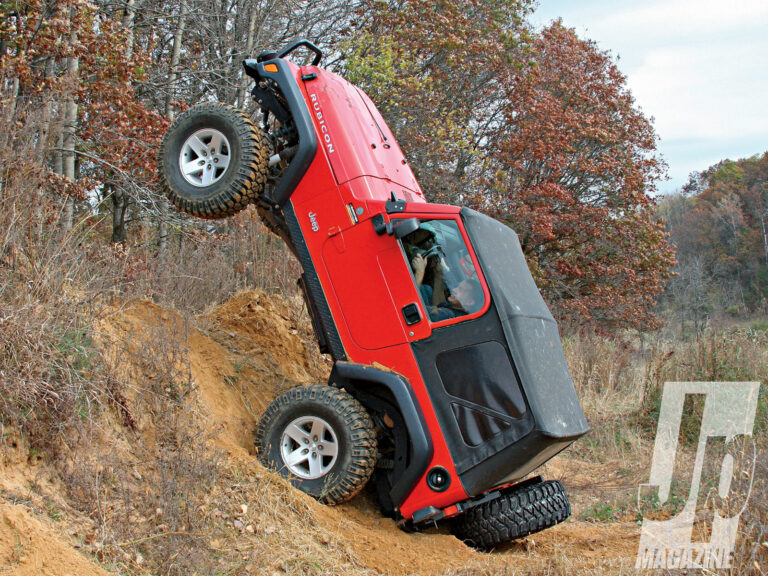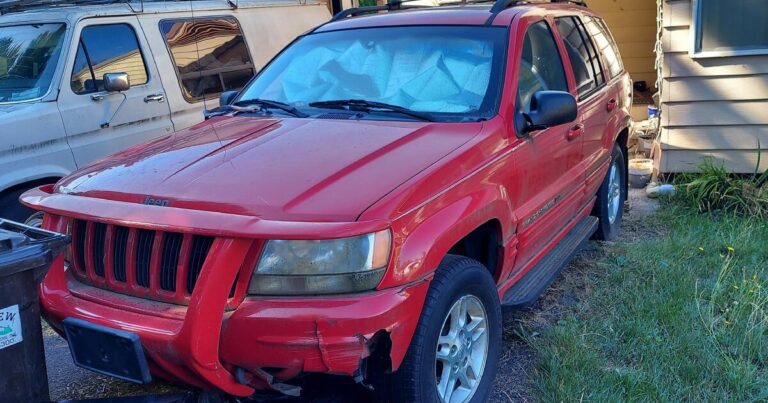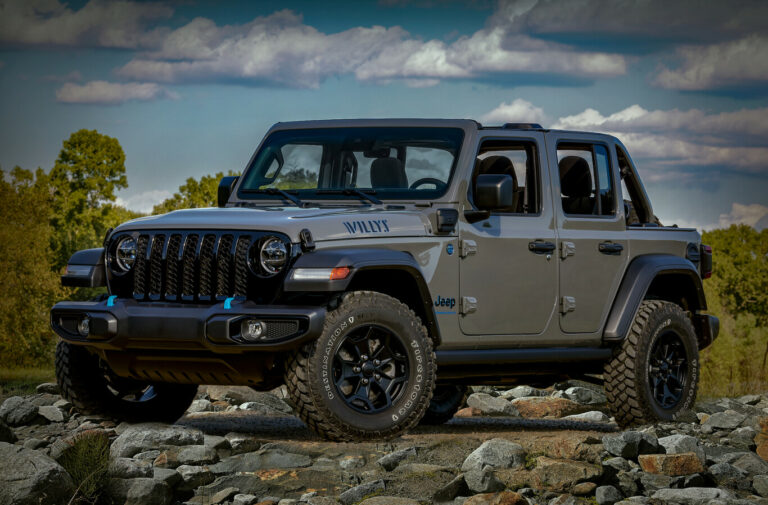1991 Jeep Renegade For Sale: Your Ultimate Buyer’s Guide
1991 Jeep Renegade For Sale: Your Ultimate Buyer’s Guide /jeeps.truckstrend.com
The 1991 Jeep Renegade isn’t just a vehicle; it’s a statement, a piece of American automotive history, and for many, a nostalgic gateway to adventure. As a distinctive variant of the iconic YJ Wrangler, the Renegade package offered a more aggressive, beefed-up aesthetic that set it apart from its brethren. For enthusiasts and collectors alike, finding a 1991 Jeep Renegade for sale presents a unique opportunity to own a rugged, capable, and undeniably cool off-road legend. This comprehensive guide will delve into everything you need to know about purchasing and owning this beloved classic, helping you navigate the market and make an informed decision.
The Enduring Appeal of the 1991 Jeep Renegade
1991 Jeep Renegade For Sale: Your Ultimate Buyer’s Guide
The Jeep Wrangler YJ, produced from 1987 to 1995, marked a significant evolution for the CJ series, introducing square headlights (a controversial but now iconic feature) and a more refined interior, while retaining its legendary off-road prowess. Within this generation, the Renegade package, available from 1991 to 1994, stood out. It was a factory-optioned trim level designed by the American Sunroof Company (ASC) that transformed the standard YJ into a more visually muscular and upscale offering.
What makes the 1991 Renegade so appealing today? Its unique aesthetic is a major draw. The most distinctive features include wider, body-colored fiberglass fender flares that give it a broader stance, integrated front and rear bumpers with fog lights, and special alloy wheels. Inside, Renegade models often came with upgraded seating, a sport steering wheel, and a full gauge package. Beneath the skin, most Renegades were equipped with the robust 4.0-liter inline-six (I6) engine, known for its bulletproof reliability and ample torque, making it a formidable companion on trails and a surprisingly peppy daily driver for its era.
Beyond its looks and mechanicals, the Renegade embodies the quintessential Jeep experience: open-air freedom with removable doors and a fold-down windshield, legendary 4×4 capability, and a vibrant community of passionate owners. For those seeking a vehicle that blends classic charm with genuine utility, a 1991 Jeep Renegade for sale holds immense relevance.
What to Look For When Buying a 1991 Jeep Renegade
Purchasing a 30-year-old vehicle requires a meticulous approach. While the 1991 Renegade is known for its durability, time and previous ownership can take their toll. Here’s a detailed breakdown of what to inspect:
1. Rust is the Enemy:
The single most critical factor when evaluating any YJ Wrangler, especially one from the salty northern states or coastal regions, is rust.
- Frame: Inspect the frame rails thoroughly, particularly around the skid plate, spring hangers, shackle mounts, and where the frame bends over the rear axle. Look for bubbling, flaking, or previous patch jobs.
- Body Tub: Check the floorboards (especially under the carpet/liner), rocker panels, body mounts, and the area around the windshield frame and cowl. Rust in these areas can be extensive and costly to repair.
- Renegade Specifics: Pay close attention to how the fiberglass flares are attached to the steel body. Water can get trapped, leading to accelerated rust in the underlying metal.
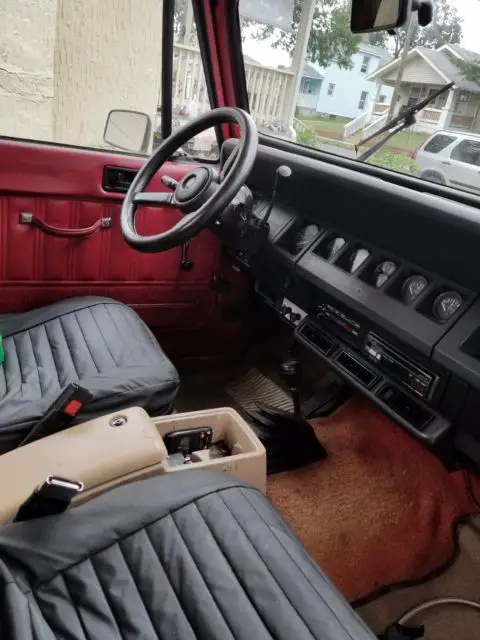
2. Mechanical Health:
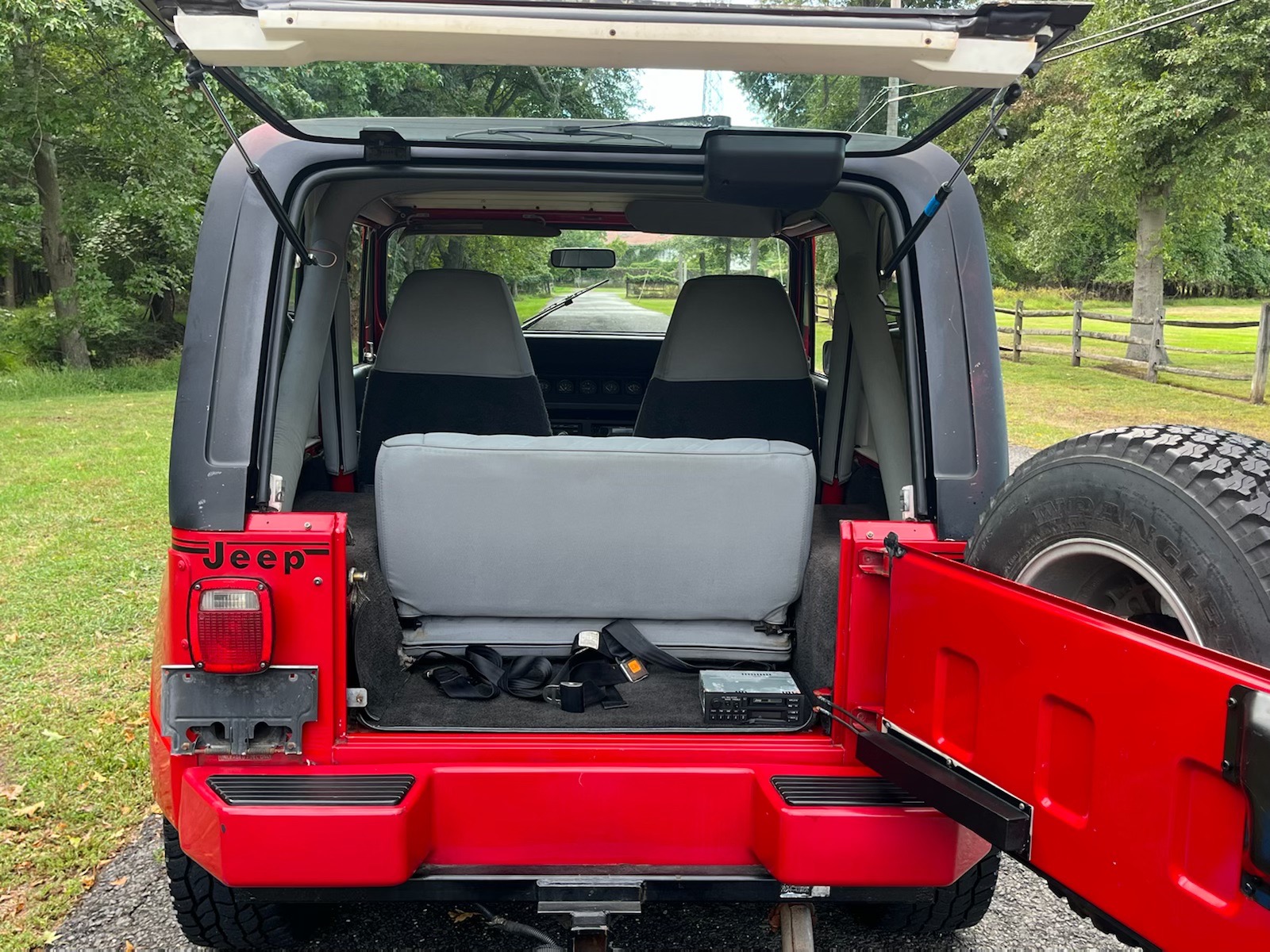
- Engine (4.0L I6 vs. 2.5L I4): While the 4.0L is generally preferred for its power and longevity, both engines are reliable. Listen for unusual noises (knocks, ticks, squeals), check for excessive oil leaks (common but should not be severe), and examine the cooling system for leaks or signs of overheating. Check the oil and coolant condition.
- Transmission:
- Manual (AX-15 5-speed): Test all gears, listen for grinding or popping out of gear. The AX-15 is robust but synchronizers can wear.
- Automatic (32RH 3-speed): Check fluid levels and color (should be reddish, not brown or burnt). Ensure smooth shifts without hesitation or slipping.

- Transfer Case (NP231 Command-Trac): Engage 4-high and 4-low. Ensure it shifts smoothly and locks in properly. Listen for clunks or grinding.
- Axles: Check for leaks at the differential covers and axle seals. Grab the driveshafts and try to twist them to check for excessive play in U-joints.
- Suspension: Examine leaf springs for sagging, cracks, or broken leaves. Check bushings for wear and shocks for leaks. A bouncy ride indicates worn shocks.
- Steering: Look for excessive play in the steering wheel. Inspect the tie rods, drag link, and ball joints for wear.
- Brakes: Check for even wear on rotors/drums, and ensure the pedal feels firm.
3. Exterior and Interior Condition:
- Renegade Body Kit: Inspect the fiberglass fender flares and bumpers for cracks, damage, or poor repairs. These parts can be expensive or difficult to replace. Ensure the integrated fog lights work.
- Soft Top/Hard Top: Check the condition of the soft top fabric (rips, tears, faded spots) and zippers. If it has a hardtop, check for cracks, leaks, and the condition of the headliner.
- Doors and Hinges: Check for sagging doors and worn hinges.
- Interior: Look for rips in seats, cracks in the dashboard, and working gauges/lights. Water intrusion is common, so check for mold or musty smells.
4. Aftermarket Modifications:
Many Jeeps are modified. Assess the quality of any lifts, larger tires, winches, or engine modifications. Poorly installed lifts can lead to handling issues, and non-professional electrical work can cause nightmares.
Practical Advice:
- Pre-Purchase Inspection (PPI): Always get a PPI from an independent mechanic specializing in 4x4s or classic vehicles. It’s the best money you’ll spend.
- Service Records: Ask for any available service history. It provides insight into how well the vehicle was maintained.
- VIN Check: Run a VIN check to look for accident history, flood damage, or title issues.
The Ownership Experience: Benefits and Challenges
Owning a 1991 Jeep Renegade is an experience unlike modern vehicles.
Benefits:
- Unrivaled Off-Road Capability: With its solid axles, short wheelbase, and robust 4×4 system, the Renegade is incredibly capable off-road.
- Customization Potential: The aftermarket for YJs is vast, allowing for endless modifications to suit your style and needs.
- Community: Jeep owners are a tight-knit community, offering support, advice, and opportunities for group adventures.
- Simplicity and DIY Friendly: Compared to modern vehicles, the YJ is relatively simple mechanically, making many repairs and maintenance tasks achievable for the DIY enthusiast.
- Classic Appeal & Investment Potential: Well-maintained, original Renegades are appreciating in value, making them a fun hobby and a potential investment.
- Open-Air Freedom: The removable top and doors provide an unmatched driving experience.
Challenges:
- Ride Comfort: The leaf spring suspension, while durable for off-roading, provides a firm and often bouncy ride on pavement.
- Fuel Economy: Don’t expect Prius-like MPG. The 4.0L I6 is thirsty, typically delivering 13-17 MPG, depending on gearing and tire size.
- Safety Features: Modern safety features like airbags, ABS, and stability control are absent. Drive defensively.
- Noise: Wind noise and road noise are significant, especially with a soft top.
- Maintenance: While simple, it’s an old vehicle. Expect to perform regular maintenance and address age-related issues. Rust remediation can be a continuous battle if not addressed properly initially.
Maintenance Tips:
- Regular oil changes (every 3,000 miles).
- Check all fluid levels frequently (coolant, power steering, brake, differential, transfer case, transmission).
- Grease U-joints and steering components regularly.
- Inspect brakes and suspension components periodically.
- Address any rust spots immediately to prevent further spread.
Valuing a 1991 Jeep Renegade: Pricing and Market Trends
The price of a 1991 Jeep Renegade for sale varies significantly based on condition, mileage, modifications, engine type, and geographical location. As a desirable classic, pristine examples command a premium, while project vehicles can be found for much less.
Factors Influencing Price:
- Condition (Rust-Free is King): A rust-free frame and body will drastically increase value.
- Originality vs. Modified: Highly original, unmolested examples often fetch more from collectors. Well-executed, tasteful modifications can add value, but poorly done ones detract.
- Engine & Transmission: 4.0L I6 models are generally more sought after than the 2.5L. Manual transmissions often have a slight edge in value for enthusiasts.
- Mileage: Lower mileage generally means higher value, assuming the vehicle hasn’t sat for extended periods.
- Renegade Package Condition: The unique fiberglass flares and bumpers must be in good shape.
- Hardtop vs. Soft Top: A factory hardtop can add value, especially if it’s body-colored.
Market Trends:
The YJ generation, particularly the Renegade, has seen a steady increase in value over the past decade. They are becoming increasingly popular as "analog" driving experiences and as desirable classics. Prices are not likely to drop significantly for well-maintained examples.
Estimated Price Range Table (1991 Jeep Renegade For Sale):
| Condition Category | Estimated Price Range (USD) | Key Characteristics |
|---|---|---|
| Project/Parts Car | $3,000 – $7,000 | Significant rust (frame/body), major mechanical issues (non-running or severe problems), damaged Renegade body kit, interior disrepair. Requires extensive restoration. |
| Fair Condition | $7,000 – $12,000 | Visible rust (surface to moderate), needs mechanical work (e.g., suspension, leaks, minor engine issues), worn interior, faded paint, some damage to Renegade flares. Drivable but requires investment. |
| Good Condition | $12,000 – $20,000 | Minimal to no significant rust, solid frame, good running engine/transmission, minor cosmetic flaws (paint chips, minor interior wear), all Renegade components intact. Ready to drive and enjoy with minor upkeep. |
| Excellent/Showroom | $20,000 – $35,000+ | Near-flawless, rust-free condition, original paint or high-quality repaint, meticulously maintained mechanicals, pristine interior, all Renegade-specific parts perfect. Low mileage examples, often highly original or professionally restored. Collector-grade. |
Note: These are estimates and can fluctuate based on specific vehicle history, location, and market demand. Always verify with current market listings (e.g., online marketplaces, classic car dealers) and a professional appraisal.
Concluding Summary
The 1991 Jeep Renegade for sale is more than just a used car; it’s an entry point into a lifestyle of adventure, customization, and community. Its distinctive looks, coupled with the YJ’s legendary off-road capability and the robust 4.0L engine, make it a highly desirable classic. While potential buyers must be vigilant about rust and age-related wear, the rewards of owning such an iconic vehicle far outweigh the challenges. With careful inspection, a realistic budget for potential repairs, and a passion for the open road (or trail), a 1991 Jeep Renegade can provide years of unique driving pleasure and become a cherished part of your automotive story. It’s not just a purchase; it’s an investment in an experience.
Frequently Asked Questions (FAQ)
Q1: Is the 4.0L engine much better than the 2.5L in the 1991 Renegade?
A1: Yes, for most drivers, the 4.0L inline-six is significantly better. It offers considerably more horsepower and torque, making the Jeep more capable on the highway, in traffic, and especially off-road. The 2.5L is adequate but can feel underpowered.
Q2: Are parts hard to find for a 1991 Jeep Renegade?
A2: No, parts are generally easy to find. While some specific Renegade body kit components might require more searching, most mechanical, suspension, and interior parts are widely available due to the popularity and long production run of the YJ Wrangler.
Q3: Is a 1991 Jeep Renegade good for daily driving?
A3: It can be daily driven, but be aware of its limitations. The ride is firm, fuel economy is poor, and noise levels are high. It lacks modern creature comforts and safety features. For short commutes or as a secondary fun vehicle, it’s great; for long highway commutes, it might be tiresome.
Q4: What’s the main difference between a Renegade and a regular YJ Wrangler?
A4: The main difference is cosmetic. The Renegade package added wider fiberglass fender flares, unique integrated front and rear bumpers with fog lights, specific alloy wheels, and usually an upgraded interior. Mechanically, they are largely the same, though many Renegades came standard with the more powerful 4.0L engine and power steering.
Q5: How can I tell if a 1991 Renegade has significant rust?
A5: Look under the Jeep with a flashlight. Pay close attention to the frame rails, especially near the suspension mounts and skid plate. Check the floorboards from both inside and underneath. Poke suspected areas with a screwdriver – if it goes through, it’s bad. Don’t just look at the visible body; the frame is critical.

